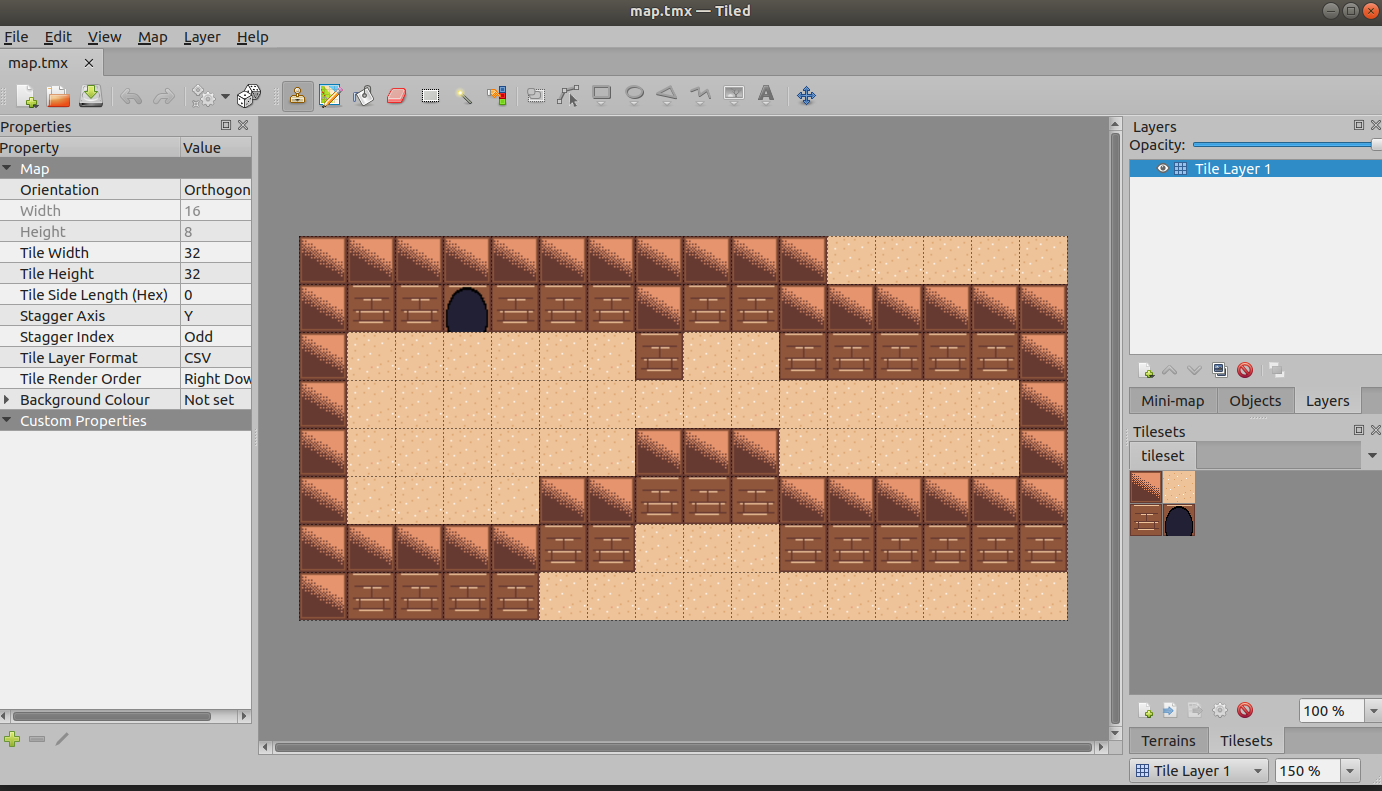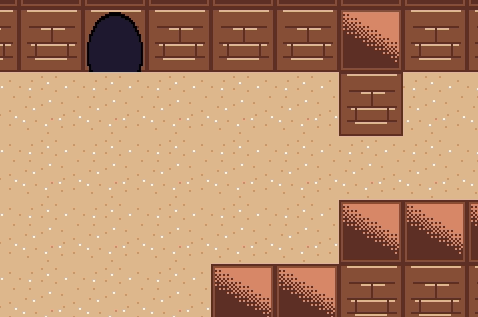← Back to Blog
Tiled maps on the Game Boy Advance
Recently, in order to realize some of my childhood dreams, I have been learning about Game Boy Advance (GBA) development using Jasper Vijn’s awesome Tonc guide. He is great at explaining the art of GBA development, so please read his blog if you are interested as well1! One of the first things you will learn is that the GBA does almost2 everything with hardware-rendered tile maps.
Configuring a tile map takes a few steps, which includes formatting the map into binary data the GBA’s internal hardware can understand. This is a shame, as many digital artists and game designers have no (desire to acquire) skills in the black art of manually typing hexadecimal values into a text editor. And nor should they: most of these artist are experienced with Tiled, a neat and well-grown tile map editor.
Tiled2GBA
In order to allow these creative individuals to work with the GBA, I
decided to create a tiny tool that converts Tiled .tmx map files into one
of the two following formats:
- Compilable source code.
- Appendable binary data (Recommended: this allows your GBA game to be data-driven 😊 ).
This tool is open-source, and can be found on Github.
The repository’s documentation should explain its usage well enough (and Tiled2GBA --help does so as well), but in general
you can simply call the binary Tiled2GBA with a map file and output location
as parameters.
As an example, have a look at the tiled map below:

Running Tiled2GBA map.tmx map.bin --binary and appending it to the end of mapViewer.gba will allow you to view it on your GBA:

Cool right? This is the power of a data-driven architecture, where your game can both run on a Windows-10 x64 machine, as well as an ARM-based console from 2001. You cannot convince me that this isn’t extremely neat.
Not all kinds of map properties are compatible with the GBA,
and thus cannot be optimally converted. Tiled2GBA will either WARN the user or
provide an ERROR message. These limitations include:
- The GBA only supports up to 3 layers in a map. If Tiled defines more than 3, the other layers are ignored.
- Tiles on the GBA are 8x8 pixels large. The tool tries to automatically subdivide larger tiles that are a multiple of this size.
- Maps can either be 32x32, 32x64, 64x32 or 64x64 tiles (measured in 8x8 sized tiles) large.
- Only 256 colors can be loaded into memory.
Again, you should not be scared of any odd behavior when breaking these limitations, the tool will clearly warn you if you break them.
Downloads
Do not feel like compiling the sources yourselves? You can download the binary for both Windows 10 and Debian Linux here.
-
Although the platform might be old and dusty, the limitations you will face whilst programming on this console are a great way to improve your general programming skills and hone your grasp of memory management. I can babble a lot about memory management, and maybe I will… someday. ↩
-
There are some exceptions, such as DOOM for the GBA, which uses some highly-optimized code in order to render individual pixels. ↩